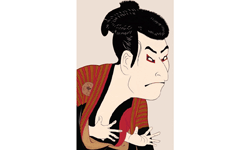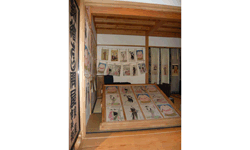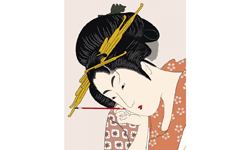
English | Japanese

English | Japanese



Ukiyoe is a style of Japanese wood-block printing developed during the Edo period (1603 – 1868). The term Ukiyo-e translates as "pictures of the floating world". Floating world indicates modern, current world with a kind of eroticism.
It depicts the Japanese landscape, the everyday life of commoners, Kabuki actors (picture on the left), Sumo wrestlers, beautiful women (picture on the right) etc. You can learn what the people of Edo loved from Ukiyoe.
They were also good souvenir (picture in the middle) for those who traveled to and from Edo to show to their family and local people the latest fashion at that time in Edo as well as scenery of each location.
It is said
that Ukiyoe had a great impact on the western Impressionist such as Manet, Van Gogh, Monet, Gauguin etc. Actually, in the background of “Portrait of Pere Tanguy” by Van Gogh has some Ukiyoe. Another example of the influence on Impressionist is Monet’s house in Giverny. There has many Ukiyoe in some rooms of Monet's Geverny house. Many Ukiyoe were exported to Europe and the U.S.A. in Meiji era (1868 - 1912), so that Japanese can see some great masterpieces only when those
are sometimes returned and exhibited in a special exhibition held in a certain museum in Japan.
However, there is one good Ukiyoe museum in Tokyo;
Ota Memorial Museum of Ukiyoe. Not only permanent exhibition,
but a special exhibition can be enjoyable to watch. It is located in Harajuku, so you can enjoy Meiji Jingu Shrine as well.